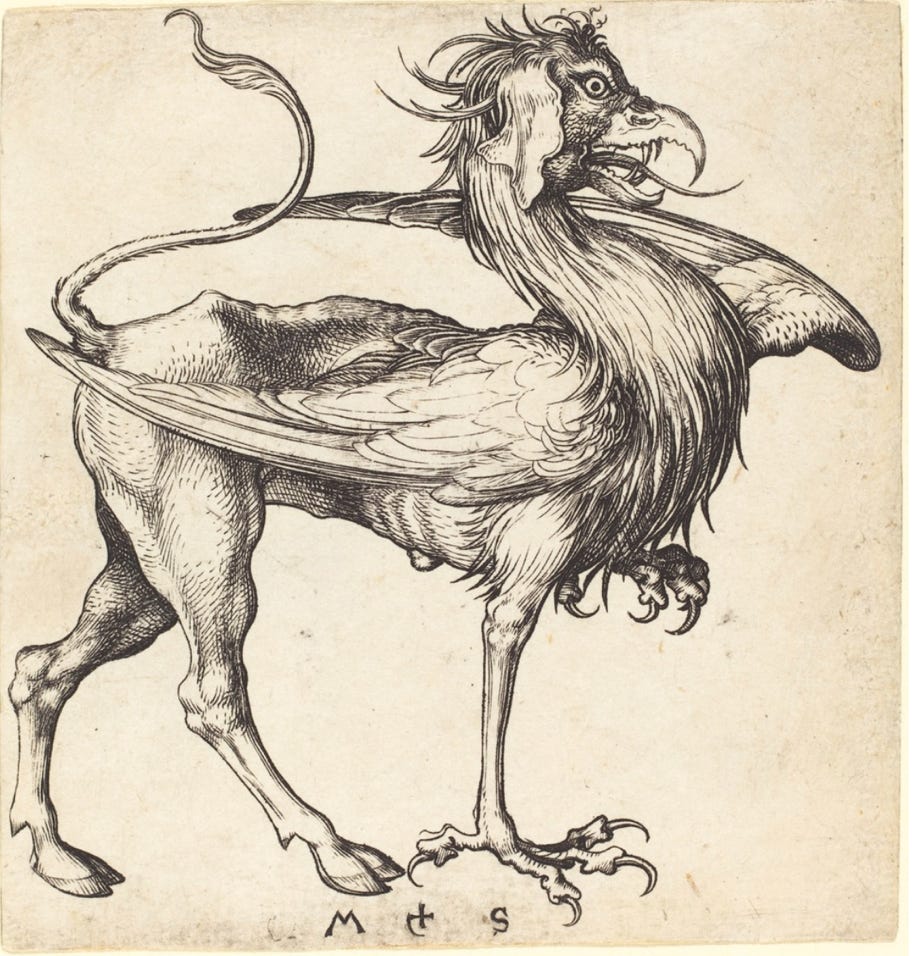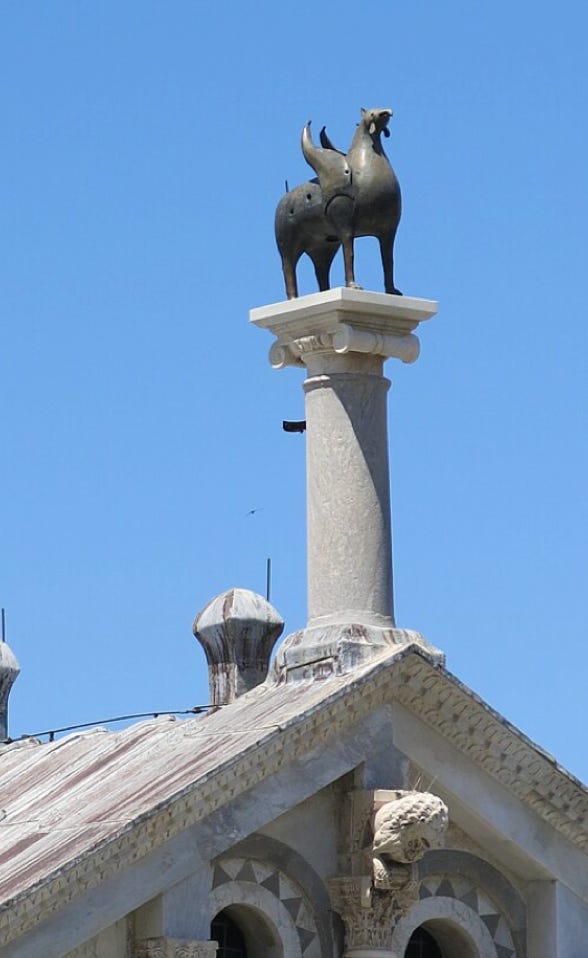

The Pisa Griffin.
#42 - Griffins
Summary
We explore the mythical creature known as the Griffin, delving into its origins, cultural significance, and dual nature as both a ferocious beast and a maternal figure. We highlights various historical accounts, particularly from Mandeville and Persian mythology, and we examine the Griffin's representation in heraldry, literature, and spiritual allegories. Our conversation also touches on the Griffin's association with Alexander the Great and its symbolic connections to precious stones and spiritual properties, culminating in its portrayal in works like Dante's and Milton's. We examine the multifaceted nature of the griffin, exploring its representation in literature, art, and religious texts.
Takeaways
- The Griffin is described as a composite creature with the body of a lion and the head of an eagle.
- Mandeville's accounts of mythical creatures blend fact and fiction.
- The Simurg, a Persian creature, shares similarities with the Griffin.
- Griffins are often depicted as ferocious, yet some cultures view them as maternal figures.
- The Griffin has significant cultural and spiritual meanings in Sufism.
- In medieval heraldry, the Griffin is often represented as female despite masculine associations.
- The Griffin's association with gold and precious stones parallels that of dragons.
- Milton's use of the Griffin in 'Paradise Lost' presents a darker interpretation of the creature. Milton's portrayal of Satan as a sympathetic character parallels the griffin's complexity.
- The griffin serves as an intermediate character between heroism and villainy.
- Medieval sources show a lack of interest in the griffin's biological aspects.
- Artistic representations of the griffin vary widely across cultures and periods.
- Griffins were popular motifs in decorative arts, reflecting cultural exchanges.
keywords
Griffin, mythical creatures, Mandeville, Persian mythology, medieval literature, Sufism, heraldry, Alexander the Great, spiritual allegory, iconography, Griffin, mythology, medieval literature, symbolism, art history, zoology, religious texts, folklore, cultural significance, hybrid creatures